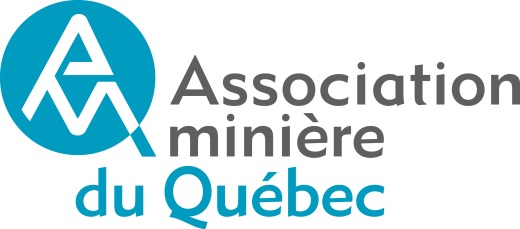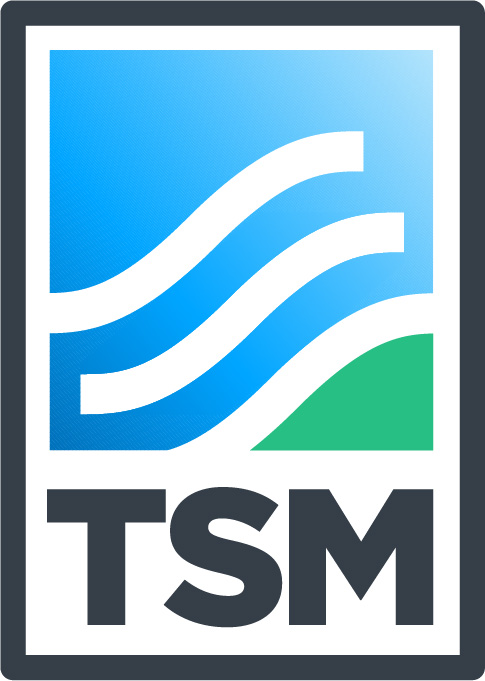Home > Company Performance > Rio Tinto

We operate in 35 countries where our 57,000 employees are working to find better ways to provide the materials the world needs. Our portfolio includes iron ore, copper, aluminum and a range of other minerals and materials needed for people, communities and nations to grow and prosper, and for the world to cut carbon emissions to net zero. We continuously search for new projects that can support the energy transition, currently exploring for eight commodities in 18 countries.
We have more than 150 years of mining and processing experience guiding our work. Today, our business relies on technology such as automation and artificial intelligence to help us run safer, more efficient operations and leave a lighter footprint.
Our purpose is at the core of everything we do. It inspires our efforts and guides our decisions.
Finding Better Ways™ to provide the materials the world needs.
Our strategy will move our business, customers, partners and the world forward.
Our people, culture and values create an environment where everyone feels safe, respected and empowered, so we can continue to find better ways together.
By working together with our community partners, we strive to make a lasting positive impact with the people and communities where we operate and where our employees live and work.
Montreal is home to Rio Tinto’s global headquarters for the aluminum and ilmenite and titanium businesses, and also serves as a global hub for Rio Tinto operations.
For more information, please visit www.riotinto.com
The company’s Canadian assets that currently report on TSM performance include the Iron Ore Company of Canada (IOC), the Diavik Diamond Mine, and Rio Tinto Iron and Titanium Quebec Operations (RTIT Qc Ops).
Iron Ore Company of Canada (IOC)
The Iron Ore Company of Canada (IOC) is a major North American producer and supplier of superior-quality iron ore concentrate and iron ore pellets. It operates a mine with five operating pits, a concentrator and a pellet plant in Labrador City, Newfoundland and Labrador. Located in a region called the Labrador Trough, known for its large deposits of high-grade iron ore, IOC also operates a fully-owned 418 km-long railway which links its Labrador operations to its port terminal in Sept-Îles, Quebec.
IOC has a workforce of approximately 2,400 and is one of the largest private-sector employers in Newfoundland and Labrador. IOC is a joint venture of Rio Tinto, Mitsubishi Corporation, and Labrador Iron Ore Royalty Corporation.
2024 TSM Performance
Following the 2024 TSM Self-Assessment completion, we have identified that the below Protocol Performance Indicators came up as below A-Level minimum performance expectations, hence we have identified key actions to ensure we reach the better performance in the best delay. The details are:
1. Did not achieve a Level A on Indicator 2 and 3 of the 2021 Climate change Protocol:
•IOC is continuing to develop their climate change action plans to meet all Level A requirements. This includes developing and implementing Asset Resilience to Climate Change Risk Assessments and Mitigation Plans, and an improvement opportunity was identified for IOC to disclose relevant Asset Resilience to Climate Change risks to impacted communities.
2. Did not achieve a Level A on Indicator 4 of the 2018 Water Stewardship Protocol:
• Improvement opportunities related to setting and disclosing water stewardship targets was identified with an action to define and disclose water targets.
Diavik Diamond Mine
The Diavik Diamond Mine in the Northwest Territories began producing in 2003, and has an annual production of six to seven million carats of predominantly large, white gem-quality diamonds. Diavik has been recognized for its efforts and successes in providing socio-economic benefits to local Indigenous communities over the last 20 years. Since 2000, Diavik has spent $5.7 billion on northern businesses, or 71% of the company’s total business expenditures. Half of its northern expenditures have supported northern Indigenous businesses and their joint ventures.
At Diavik, sustainable development is integrated into everything it does. Diavik’s operations provide benefits and opportunities for local communities, businesses and governments. Diavik works with all its stakeholders to deliver substantial and lasting benefits.
Through a responsible approach to mineral development, Diavik ensures it maintains its licence to operate. This also creates the opportunity to plan, implement, and deliver sustainable contributions to social well-being, environmental stewardship, and economic prosperity, within strong governance systems.
Diavik employs 1,113 people. Of these, 341 are non-Indigenous northerners and 219 are Indigenous northerners.
2024 TSM Performance: Following the 2024 TSM Self-Assessment completion, we confirm that Diavik meet a minimum of A Performance level on all protocols.
Havre Saint Pierre Mine
Rio Tinto Iron and Titanium Quebec Operations (RTIT Qc Ops) which is wholly owned by Rio Tinto, operates a world-class ilmenite deposit at Lac Tio near Havre-Saint-Pierre, Quebec. RTIT Qc Ops is one of the leading manufacturers of raw materials for the titanium dioxide industry and a leader in the production of iron, steel and high-quality metal powders. It pioneered the process of removing iron from ilmenite and has operated in Quebec for 65 years. RTIT Qc Ops employs approximately 250 people at Havre-Saint-Pierre.
2024 TSM Performance: Following the 2024 TSM Self-Assessment completion, we have identified that the Protocol Performance Indicators came up as below A-Level minimum performance expectations, hence we have identified key actions to ensure we reach the better performance in the best delay. The details are:
1. Did not achieve a Level A on Indicator 2 of the 2021 Indigenous and Community Relationships Protocol:
• An opportunity to improve public reporting of community engagement was identified for HSP. A section will be added to the annual Sustainability Report to outline these engagements.
2. Did not achieve a Level A on Indicator 2 of the 2021 Climate change Protocol:
• HSP is continuing to develop their climate change action plans to meet all Level A requirements. This includes developing and implementing Asset Resilience to Climate Change Risk Assessments and Mitigation Plans.
3. Did not achieve a Level A on Indicators 1, 2 and 3 of the 2020 Biodiversity Conservation Management Protocol:
• Biodiversity management was identified as a focus area for HSP. Actions will be taken to define the governance structure and develop a strategic action plan to meet the biodiversity management requirements.
4. Did not achieve the requirement on Indicator 2 of the 2022 Crisis Management and Communications Planning (Facility) Protocol:
• An improvement opportunity has been identified at HSP to strengthen the process timeline to train new BRT members upon nomination.
| Facility | Crisis management and communications preparedness | Review | Training |
|---|---|---|---|
| Diavik Diamond Mine | ✔ | ✔ | ✔ |
| Havre St. Pierre Mine | ✔ | ✕ | ✔ |
| Iron Ore Company of Canada | ✔ | ✔ | ✔ |
| Facility | PREVENTING FORCED LABOUR | PREVENTING CHILD LABOUR |
|---|---|---|
| Diavik Diamond Mine | ✔ | ✔ |
| Havre St. Pierre Mine | ✔ | ✔ |
| Iron Ore Company of Canada | ✔ | ✔ |
| Commitments and accountability | Planning and implementation | Training, behaviour and culture | Monitoring and reporting | Performance | |
|---|---|---|---|---|---|
| Havre St. Pierre Mine |
AAA
AA
A
B
C
| Tailings management policy and commitment | Tailings management system | Assigned accountability and responsibility | Annual tailings management review | Operation, maintenance and surveillance (OMS) manual | |
|---|---|---|---|---|---|
| Diavik Diamond Mine | |||||
| Iron Ore Company of Canada |
AAA
AA
A
B
C
| Commitment, accountability and communications | Conservation planning and implementation | Reporting | |
|---|---|---|---|
| Diavik Diamond Mine | |||
| Havre St. Pierre Mine | |||
| Iron Ore Company of Canada |
AAA
AA
A
B
C
| Water governance | Operational water management | Watershed-scale planning | Water reporting and performance | |
|---|---|---|---|---|
| Diavik Diamond Mine | ||||
| Havre St. Pierre Mine | ||||
| Iron Ore Company of Canada |
AAA
AA
A
B
C
| Community of Interest Identification | Effective Community of Interest Engagement and Dialogue | Effective Indigenous Engagement and Dialogue | Community Impact and Benefit Management | Community of Interest Response Mechanism | |
|---|---|---|---|---|---|
| Diavik Diamond Mine | |||||
| Havre St. Pierre Mine | |||||
| Iron Ore Company of Canada |
AAA
AA
A
B
C
| Corporate Climate Change Management | Facility Climate Change Management | Facility Performance Targets and Reporting |
|---|---|---|
| Rio Tinto – Corporate | ||
| Diavik Diamond Mine | ||
| Havre St. Pierre Mine | ||
| Iron Ore Company of Canada |
AAA
AA
A
B
C
| Leadership and Strategy | Advancing Equitable, Diverse, and Inclusive Workplaces | Monitoring, Reporting, and Performance |
|---|---|---|
| Rio Tinto – Corporate | ||
| Diavik Diamond Mine | ||
| Havre St. Pierre Mine | ||
| Iron Ore Company of Canada |
AAA
AA
A
B
C
| Commitments and Accountability | Safety and Health Management Systems | Psychological Safety and Respectful Behaviour | Training, Behaviour, and Culture | Monitoring and Reporting | Physical Safety and Health Performance | |
|---|---|---|---|---|---|---|
| Diavik Diamond Mine | ||||||
| Iron Ore Company of Canada |
AAA
AA
A
B
C
| International Initiatives | ||
|---|---|---|
| Industry Sustainability Initiatives | ICMM Sustainable Development Framework |
✔ |
WGC Conflict Free Gold Standard |
✔ | |
ISO 14001 - EMS Standard |
✔ | |
| Management System Standards | UN Global Compact |
✔ |
| International Voluntary Initiatives | Extractive Industries Transparency Initiative |
✔ |
Voluntary Principles on Security and Human Rights |
✔ | |
OECD Guidelines for Multinational Enterprises |
✔ | |
AA 1000 |
✔ | |
| Reporting, Disclosure and Transparency Standards | Global Reporting Initiative |
✔ |
CDP |
✔ | |
Water Disclosure Project |
✔ | |
Carbon Pricing Leadership Coalition |
✔ | |
IFC Social and Environmental Performance Standards |
✔ | |
| Financing Standards | Dow Jones Sustainability Index |
✔ |
| Listed on Socially Responsible Investing Indices | Jantzi Social Index |
✔ |
Responsible Jewellery |
✔ | |
| Industry Sustainability Initiatives | International Cyanide Code |
✔ |
Kimberley Process |
✔ | |
Rio Tinto | 2024 | TSM Letter of Assurance
Rio Tinto | 2024 | TSM Letter of Assurance
Rio Tinto | 2023 | TSM Letter of Assurance
Rio Tinto | 2020 | TSM Letter of Assurance
Rio Tinto | 2019 | TSM Letter of Assurance
Rio Tinto | 2019 | TSM Letter of Assurance
Rio Tinto | 2016 | TSM Letter of Assurance
Rio Tinto | 2016 | TSM Letter of Assurance
Rio Tinto | 2014 | TSM Letter of Assurance
Rio Tinto | Diavik Diamond Mine | 2024 | Verification Summary Report
Rio Tinto | Havre St. Pierre Mine | 2024 | Verification Summary Report
Rio Tinto | Iron Ore Company of Canada | 2023 | Verification Summary Report
Rio Tinto | Rio Tinto – Corporate | 2023 | Verification Summary Report
TSM Results 2019 (Externally Verified)
TSM Results 2016 (Externally Verified)

Mining Association of Canada
1100-275 Slater Street
Ottawa, ON K1P 5H9
613.233.9392 ext 316

"*" indicates required fields
*Indicates a required field
You can unsubscribe from these communications at any time. For more information on how to unsubscribe, our privacy practices, and how we are committed to protecting and respecting your privacy, please review our Privacy Policy.
By clicking submit, you consent to allow The Mining Association of Canada to store and process the personal information submitted above to provide you the content requested.